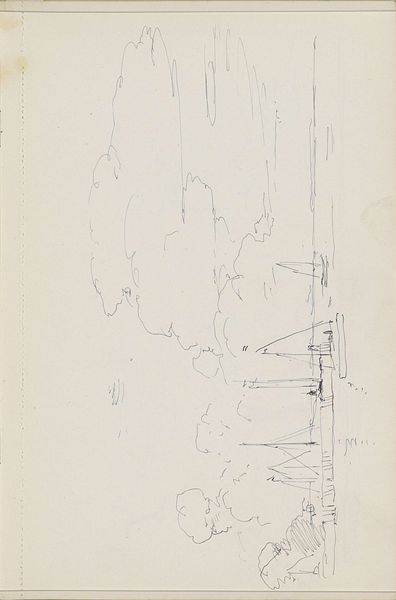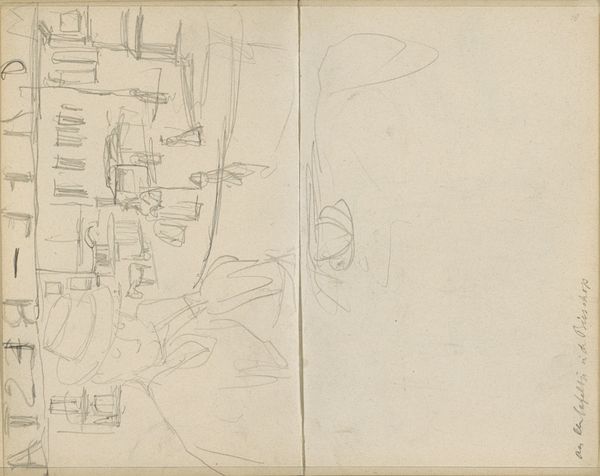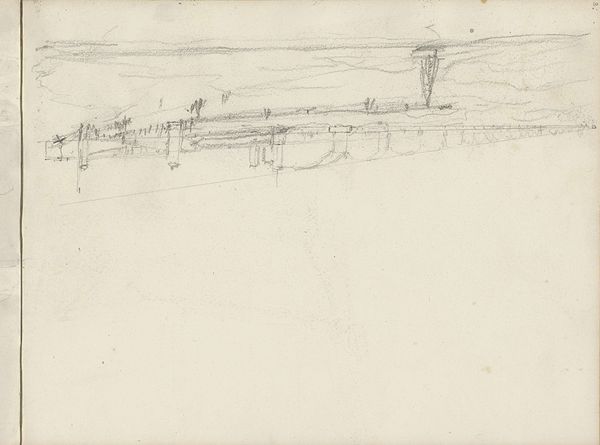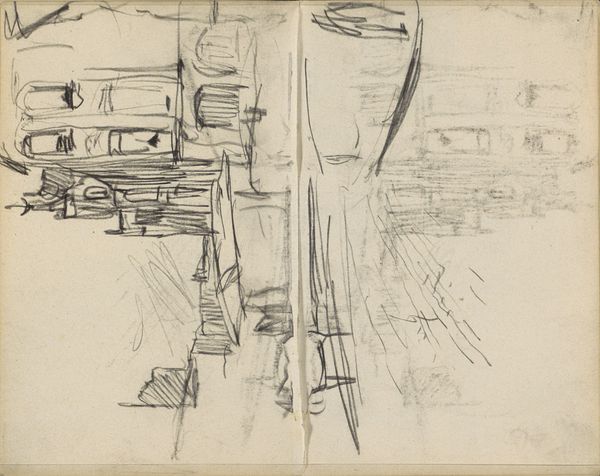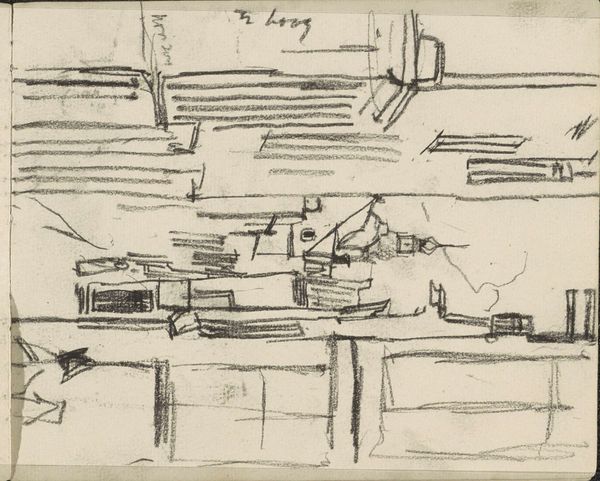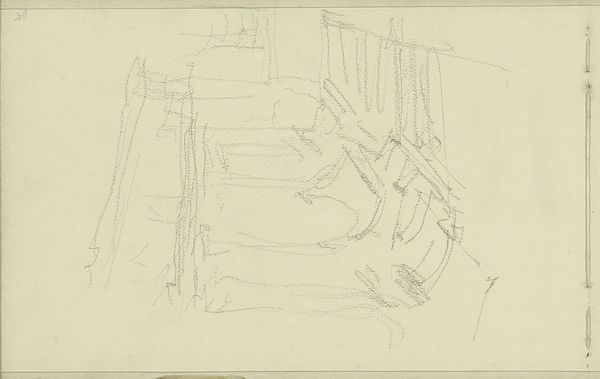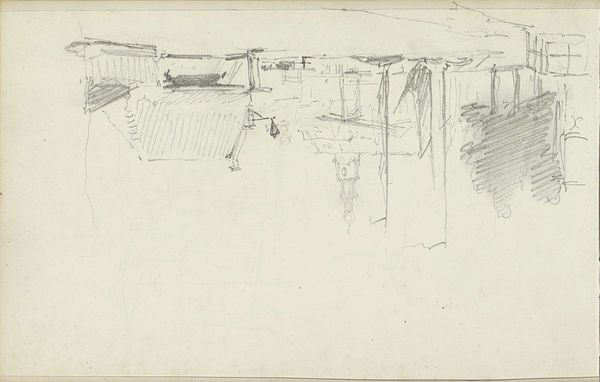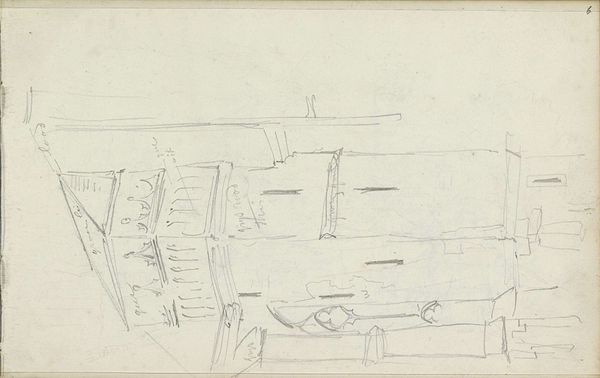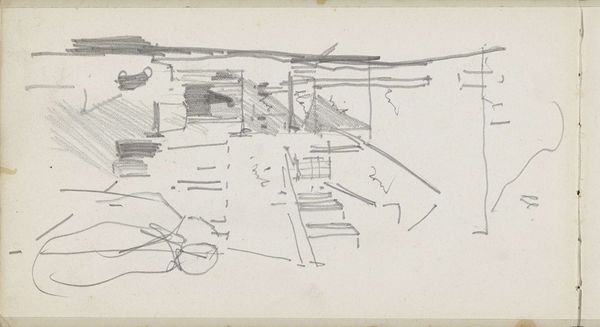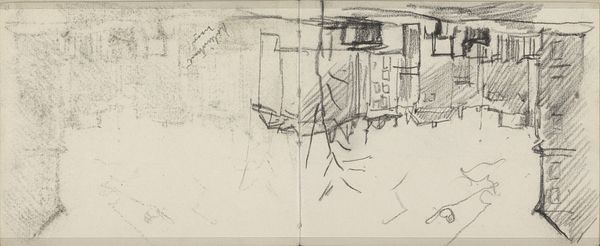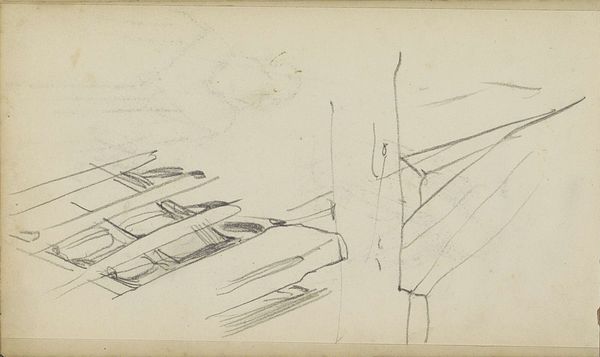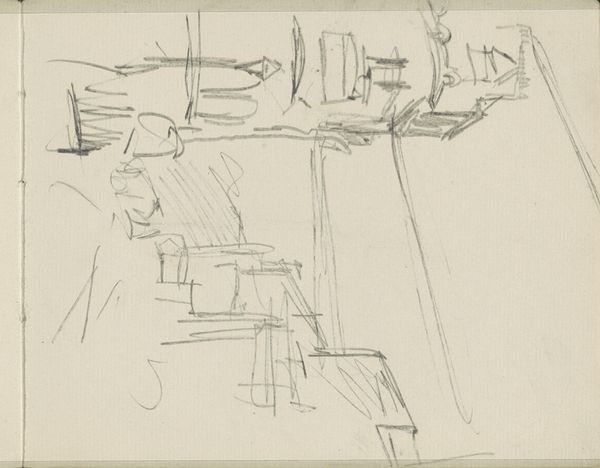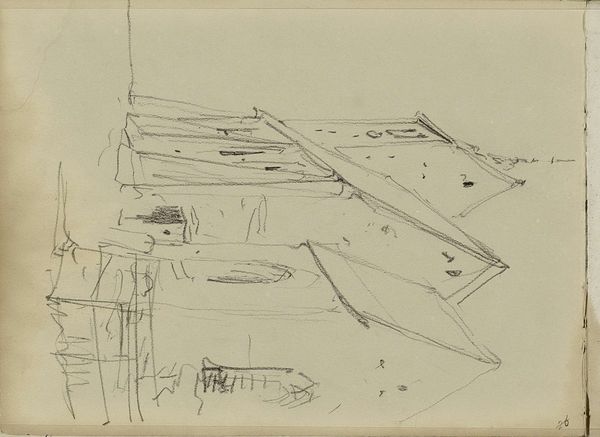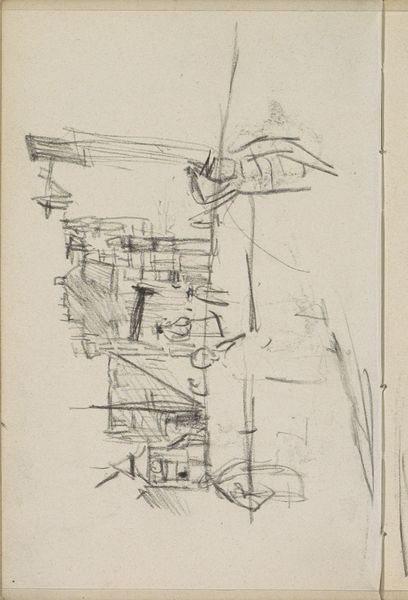
Copyright: Rijks Museum: Open Domain
Editor: This pencil drawing, "Straat met een lantarenpaal bij een brug" by Bramine Hubrecht, made sometime between 1892 and 1913… it feels almost ghostly. Like a memory sketched quickly before it fades away. I’m intrigued by its incompleteness. What draws your eye when you look at this piece? Curator: It's interesting how you perceive it as "incomplete." To me, the pencil and graphite themselves are key. Consider Hubrecht's labor here - the repeated, almost frantic application of graphite on paper to capture a fleeting urban scene. This isn’t simply representation; it’s an active engagement with the changing industrial landscape of the time. Look closely; can you discern a bridge under construction? Editor: I see the bridge now, yes! But how does the medium itself contribute to that idea of industrial change? Curator: The rapid sketch, facilitated by the readily available and relatively inexpensive graphite pencil, speaks to a society increasingly obsessed with speed and documenting change. Graphite as material connects this drawing to factories that would manufacture it, to distributors who make the tools available. Is this a detached "impression" or an active response to the social realities being shaped by industrial capitalism? Editor: I hadn’t considered the pencil itself as a product of industry, and how that impacts our understanding of the art! It really pushes me to rethink the context in which Hubrecht was working. Curator: Exactly. It’s not just about *what* is depicted but also *how* and with *what* that informs our interpretation. Considering the material conditions reveals new layers of meaning, connecting this seemingly simple sketch to larger systems of production and consumption. What we have here isn't just an object; it’s the result of human labour and an indicator of societal transformation. Editor: I’m leaving this conversation seeing not just a sketch, but a document of a moment of time and how we relate to that time materially. That changes everything!
Comments
No comments
Be the first to comment and join the conversation on the ultimate creative platform.
